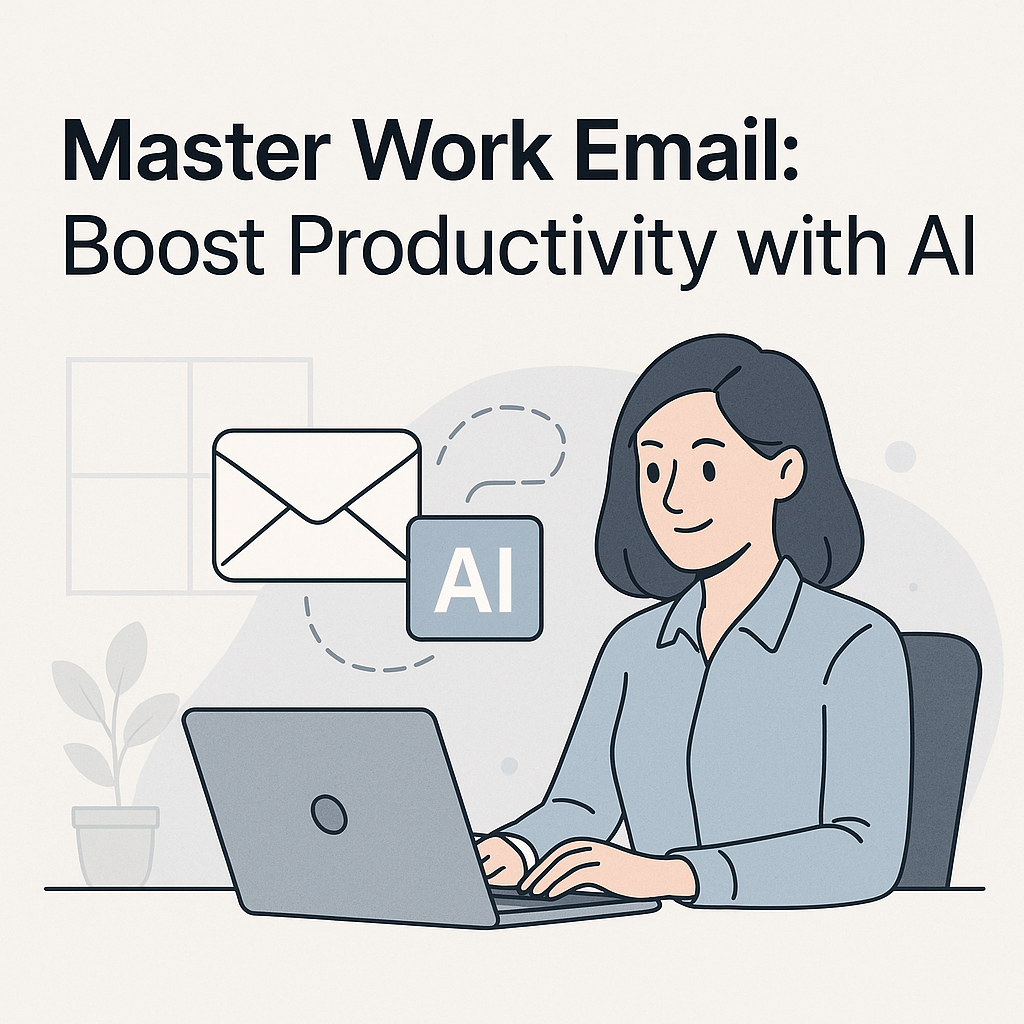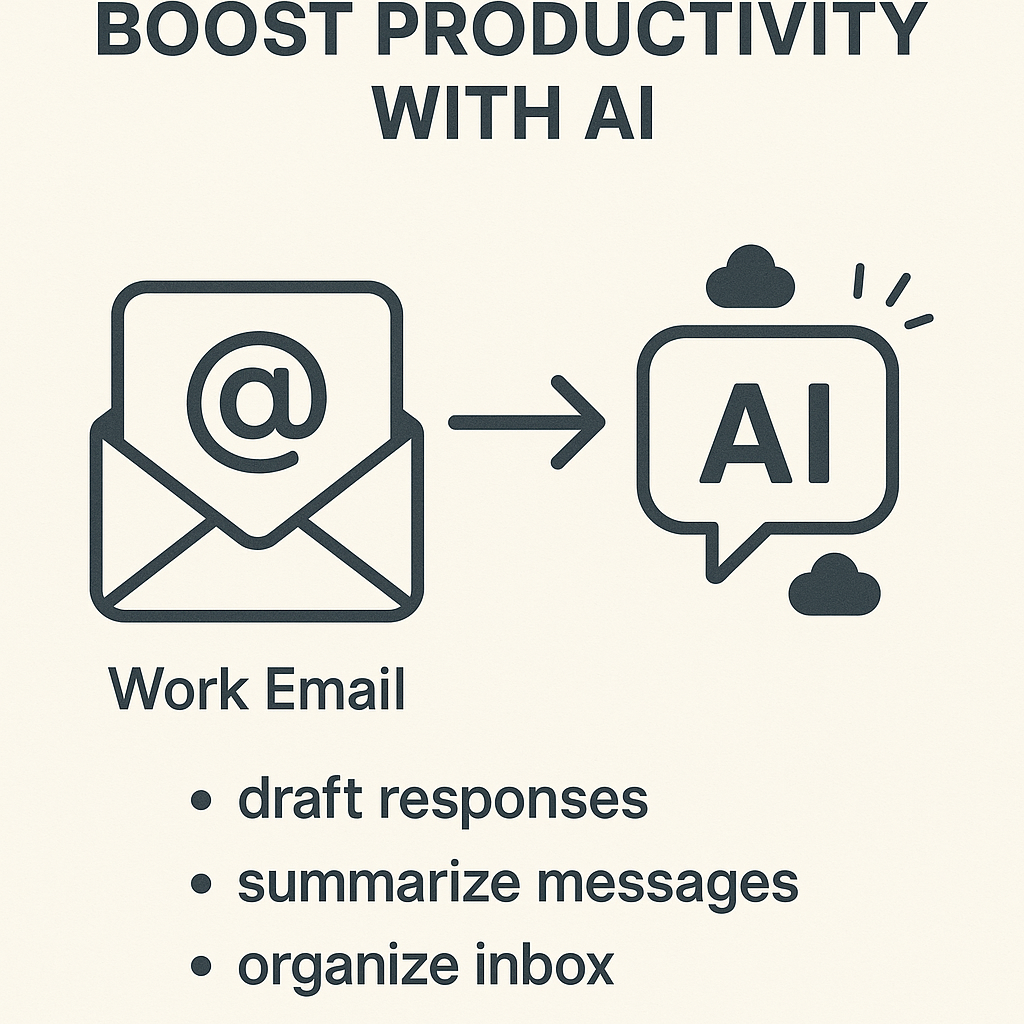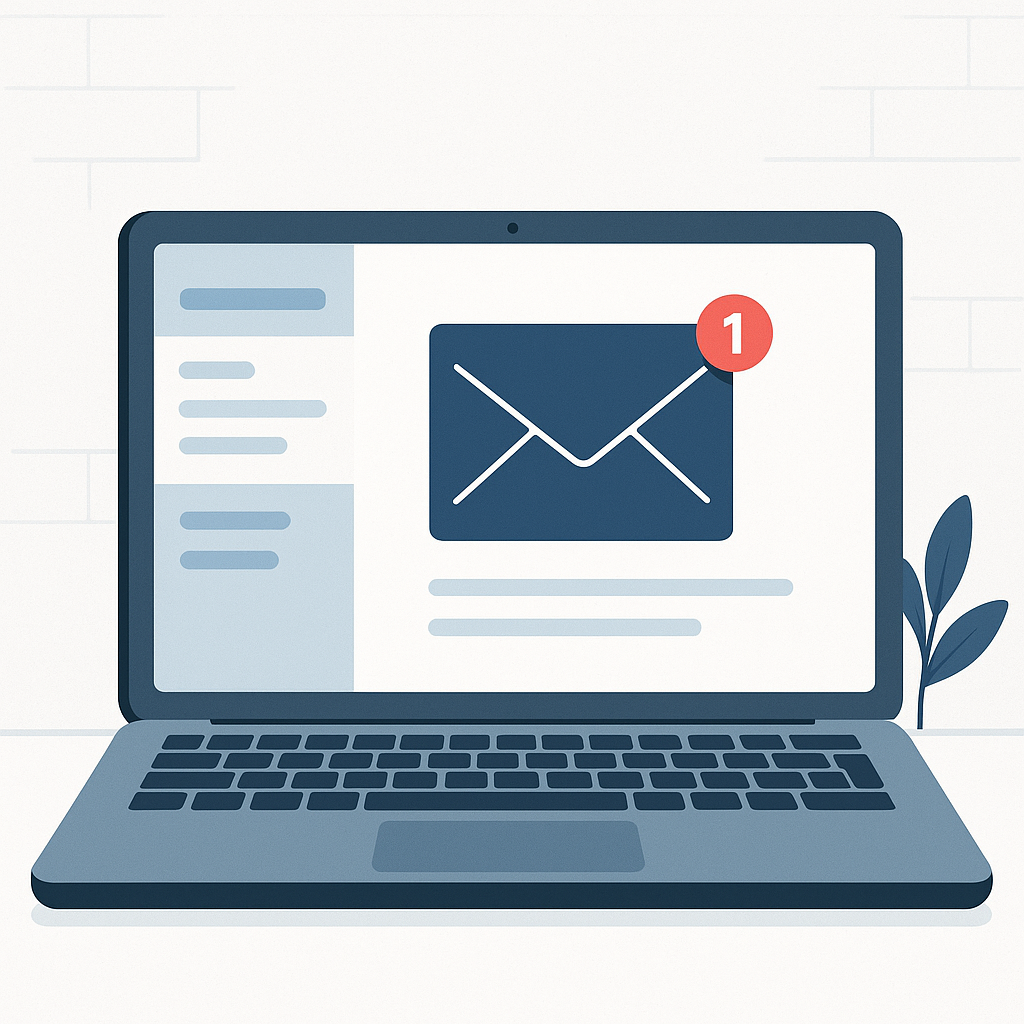Master Work Email: Boost Productivity with AI

Is your work email inbox a source of dread rather than productivity? You're not alone. In today's fast-paced professional world, email remains a primary communication channel, but it often becomes a massive time sink, pulling us away from critical tasks and strategic thinking. The sheer volume of messages, the constant need to respond, and the struggle to prioritize can leave even the most organized professionals feeling overwhelmed. But what if there was a way to reclaim your time and transform your relationship with your inbox? Enter Artificial Intelligence (AI). By understanding and leveraging the power of AI, you can move beyond simply managing your work email and start mastering it. This article will guide you through how AI can revolutionize your email workflow, boost your productivity, and help you conquer inbox overload.
The Modern Email Challenge: Inbox Overload and Time Drain
The statistics are stark. Professionals spend an average of several hours a day managing their email. According to research cited by Forbes, managers can lose over 683 hours annually to distractions, and a significant portion of that time is often consumed by email management. This constant barrage of messages leads to several critical challenges:
- Inbox Overload: Receiving hundreds of emails daily, many of which are low priority, can make it difficult to find critical information.
- Time-Consuming Repetitive Tasks: Drafting standard replies, categorizing messages, scheduling meetings, and follow-ups all eat into valuable work hours.
- Difficulty Prioritizing: Distinguishing urgent requests from less important messages requires constant mental effort, leading to missed deadlines or delayed responses.
- Context Switching: Jumping between composing emails, reading messages, and performing other tasks fragments focus and reduces deep work.
- Maintaining Professionalism: Ensuring every email is well-written, error-free, and appropriately toned can be challenging when under pressure.
These challenges directly impact overall productivity, job satisfaction, and even mental well-being. The traditional methods of managing email – manual sorting, strict rules, and endless searching – are often insufficient in the face of modern communication demands. This is where AI steps in as a powerful ally, offering intelligent solutions to these persistent problems.
Understanding AI's Role in Email Productivity
Artificial Intelligence is rapidly changing how we work, and its impact on email management is profound. At its core, AI in email aims to automate, optimize, and enhance the communication process. Instead of just being a passive inbox, your email can become an intelligent assistant. AI leverages machine learning algorithms to understand patterns, learn your preferences, and perform tasks that were previously manual and time-consuming. This technology can:
- Automate Routine Tasks: AI can handle sorting, categorizing, and responding to common queries, freeing you up for more complex work.
- Prioritize Effectively: By analyzing sender, content, and urgency indicators, AI can help you identify and focus on what truly matters.
- Enhance Communication Quality: AI tools can assist in drafting clearer, more concise, and professionally toned emails, ensuring your message lands effectively.
- Extract Key Information: AI can summarize long email threads or extract important details like dates, action items, and contact information, saving you reading time.
- Improve Security: Advanced AI algorithms are adept at identifying and filtering out spam, phishing attempts, and malicious content, protecting your work email and data.
As highlighted by Superhuman's blog, "Email shouldn't be the thing that drains your day — it should be the tool that powers your best work." AI is the key to unlocking this potential, transforming your inbox from a bottleneck into a productivity engine. Integrating an AI email assistant can fundamentally change how you interact with your communications.
Smart Inbox Organization with AI: Filters, Folders, and Prioritization
One of the most significant benefits of AI in email management is its ability to create a truly smart inbox. Gone are the days of relying solely on rigid, manually created filters and folders that often become outdated or miss crucial messages. AI-powered systems learn from your behavior and the context of your emails to organize your inbox intelligently.
Here's how AI excels at organization:
- Intelligent Sorting and Categorization: AI can automatically categorize emails not just by sender or keywords, but by intent and importance. It can differentiate between internal team communications, client inquiries, newsletters, and actionable tasks.
- Proactive Prioritization: AI algorithms analyze incoming messages for urgency. They can flag emails from key contacts, identify requests with deadlines, or recognize patterns indicating high importance, ensuring you see critical messages first.
- Clutter Reduction: AI can identify and filter out low-priority notifications, promotional emails, or newsletters that don't require immediate attention, allowing you to focus on your core responsibilities. Tools like SaneBox are excellent examples of AI-driven inbox decluttering.
- Learning User Preferences: The more you use an AI-powered system, the better it gets at understanding your unique needs. It learns which senders you always reply to, which topics are critical for your role, and which emails can be archived without a second thought.
By automating these organizational tasks, AI significantly helps to reduce email time spent sifting through messages. This allows for a cleaner, more manageable inbox, fostering a sense of control and reducing the cognitive load associated with email. For a deeper dive into synergistic approaches, explore our article on Mastering Email Inbox Management: AI & Human Synergy.
AI-Assisted Email Drafting and Response Generation
Crafting effective and timely responses is a cornerstone of professional email communication. However, staring at a blank screen or trying to rephrase the same information repeatedly can be a major productivity drain. AI-powered tools are revolutionizing email drafting by providing intelligent assistance, saving you time and improving the quality of your communications.
AI can help you:
- Generate Draft Responses: Based on the content of an incoming email, AI can suggest complete draft replies. These can range from simple acknowledgments to detailed answers, often requiring only minor edits from you.
- Improve Tone and Clarity: AI can analyze your writing and suggest improvements to make your tone more professional, friendly, or assertive, depending on your goal. It can also help rephrase sentences for better clarity and conciseness.
- Write Emails from Prompts: Some AI tools allow you to provide a few bullet points or a brief description of what you want to communicate, and the AI will draft a full email for you. This is invaluable for busy executives and entrepreneurs who need to communicate efficiently.
- Automate Follow-ups: AI can track sent emails and automatically generate follow-up reminders or draft follow-up messages if a response isn't received within a specified timeframe.
- Personalize Outreach: For sales and marketing professionals, AI can help personalize email campaigns at scale by analyzing prospect data and suggesting tailored content.
Features like "Gemini for Gmail" or integrated AI assistants in platforms like Microsoft 365 are making these capabilities accessible directly within your email client. By streamlining the drafting process, you can respond faster and maintain a consistent, high-quality standard in your work email communications. For more on how specific tools can boost your reply speed, check out AI Email Client: Boost Productivity & Reply Speed.
Automating Repetitive Email Tasks with AI Tools
Beyond drafting, AI excels at automating many of the mundane, repetitive tasks that consume your workday. This aspect of email automation is crucial for reclaiming significant chunks of time and reducing the mental fatigue associated with email management. Think about tasks like scheduling meetings, sending out standard information, or categorizing incoming requests – AI can handle these with precision and speed.
Examples of AI-driven automation in email include:
- Meeting Scheduling: AI assistants can parse your calendar and email requests to find mutually agreeable meeting times, send out invitations, and handle rescheduling conflicts, eliminating the back-and-forth negotiation.
- Data Entry and CRM Updates: AI can extract contact information, company details, or project specifics from emails and automatically update your CRM or other productivity tools.
- Template Management: While traditional templates exist, AI can go a step further by intelligently selecting and personalizing template responses based on the email's content and your past interactions.
- Task Creation: AI can identify action items within emails and automatically create tasks in your to-do list or project management software, ensuring nothing falls through the cracks.
- Follow-up Sequences: For sales outreach or project management, AI can manage automated follow-up sequences based on predefined triggers and recipient engagement.
Numerous AI productivity tools are designed to integrate with your existing email setup, offering these automation capabilities. Platforms like Missive, MailMaestro (formerly Flowrite), and Superhuman AI are prime examples of solutions that leverage AI to streamline these processes. Exploring resources like "7 Best AI-Powered Tools for Email Productivity for Busy Professionals" can provide further insights into available options.
Using AI for Email Summarization and Information Extraction
Long email threads can be daunting. Whether it's a project update chain, a client discussion, or a company-wide announcement, wading through dozens of messages to find the key takeaways is a classic time drain. AI-powered summarization and information extraction tools are game-changers for anyone looking to reduce email time and quickly grasp essential information.
How AI helps with summarization:
- Condensing Long Threads: AI can analyze an entire email conversation and generate a concise summary highlighting the main points, decisions made, and outstanding action items. This allows you to get up to speed in minutes, not hours.
- Extracting Key Data Points: Beyond summaries, AI can extract specific pieces of information, such as dates, times, locations, contact details, order numbers, or financial figures, and present them in an easily digestible format.
- Identifying Action Items: AI can be trained to recognize phrases that indicate tasks or responsibilities, automatically listing who needs to do what by when.
- Contextual Understanding: Advanced AI models can understand the nuances of language, sarcasm, and implied meanings, leading to more accurate summaries and data extraction than traditional keyword-based methods.
Imagine receiving a lengthy project update email and, instead of reading through 20 messages, you get a two-sentence summary with a list of action items. This capability is incredibly powerful for busy professionals, enabling faster decision-making and keeping everyone aligned without getting bogged down in the details. This efficiency boost is a core benefit of embracing email artificial intelligence.
AI-Powered Email Security and Spam Management
While productivity is a major focus, the security of your work email is paramount. Cyber threats are constantly evolving, with phishing attempts, malware, and spam becoming increasingly sophisticated. AI plays a crucial role in bolstering email security by providing advanced detection and protection mechanisms that go far beyond traditional rule-based filters.
AI enhances email security by:
- Advanced Spam Filtering: AI algorithms can analyze email content, sender reputation, sending patterns, and other behavioral indicators to accurately identify and quarantine spam, reducing the likelihood of it cluttering your inbox.
- Phishing Detection: AI is highly effective at recognizing the subtle signs of phishing attacks, such as suspicious links, urgent language, spoofed sender addresses, and requests for sensitive information. It can flag these emails or block them entirely.
- Malware Detection: AI can analyze attachments and links for malicious code or patterns associated with known malware, preventing infections before they occur.
- Behavioral Analysis: AI can learn normal communication patterns for your organization and flag anomalies that might indicate a compromised account or an unusual threat.
- Zero-Day Threat Protection: By learning from new threats in real-time, AI can offer protection against novel attacks that haven't been seen before, making it a dynamic defense mechanism.
By entrusting AI with a significant portion of your spam and security management, you not only protect your data and reputation but also save time that would otherwise be spent manually identifying and deleting malicious emails. This proactive approach ensures your work email remains a safe and efficient communication tool.
Best Practices for Integrating AI into Your Work Email Workflow
Adopting AI into your daily email routine can be transformative, but it requires a thoughtful approach. Simply installing new tools without a strategy can lead to confusion or underutilization. Here are best practices to ensure a smooth and effective integration of AI productivity tools into your workflow:
- Start with Specific Goals: Identify your biggest email pain points. Is it the volume, the response time, or the organization? Choose AI tools that directly address these issues.
- Gradual Adoption: Don't try to overhaul your entire system overnight. Begin by implementing AI features for one specific task, like email summarization or response drafting, and gradually expand as you become comfortable.
- Choose the Right Tools: Research and select AI solutions that integrate well with your existing email client and other productivity software. Consider features, ease of use, security, and cost. Tools like an ai executive assistant can help streamline your workflow by managing multiple aspects of your communication, from drafting and scheduling to prioritizing and summarizing.
- Understand AI's Limitations: AI is a powerful assistant, but it's not infallible. Always review AI-generated content for accuracy, tone, and context, especially for critical communications. Maintain human oversight.
- Leverage AI for Learning: Use AI-generated insights to improve your own email habits. For example, if AI consistently flags certain types of emails as high priority, take note of those patterns.
- Stay Updated: The field of AI is constantly evolving. Keep abreast of new features and capabilities that can further enhance your productivity.
- Focus on Synergy: Think of AI not as a replacement for human skills but as a complement. The most effective approach combines AI's speed and automation with your judgment, creativity, and empathy. This human-AI synergy is key to truly mastering your work email.
By following these practices, you can harness the full potential of AI to manage your work email more effectively, boost your overall productivity, and achieve a better work-life balance. For more on refining your approach, consider our guide on Top Email Management Programs for AI-Powered Productivity.
Conclusion
The modern professional's inbox can feel like an insurmountable challenge, but AI offers a powerful path forward. By embracing AI-powered tools for organization, drafting, automation, summarization, and security, you can transform your relationship with work email. You can move from being reactive to proactive, from overwhelmed to in control, and from spending hours on busywork to dedicating more time to strategic, high-impact activities. Mastering your email with AI isn't just about saving time; it's about enhancing your effectiveness, reducing stress, and ultimately, boosting your overall productivity.
Start exploring the capabilities of AI today. Experiment with different tools, integrate them thoughtfully into your workflow, and discover how much more you can achieve when your email works for you, not against you. Ready to unlock a new level of efficiency? Dive into how Email AI Transforms Productivity and take the first step towards a smarter, more productive email experience.
```


